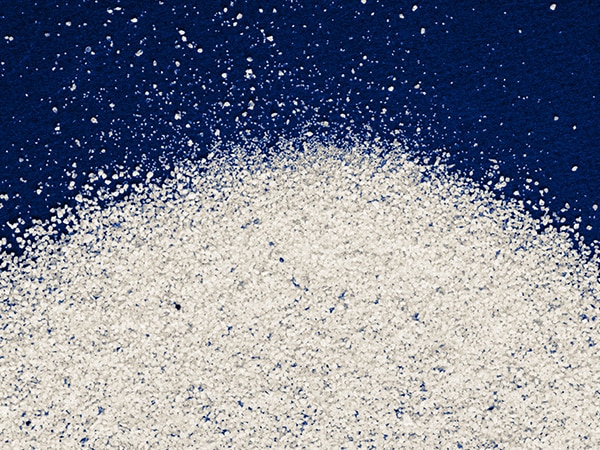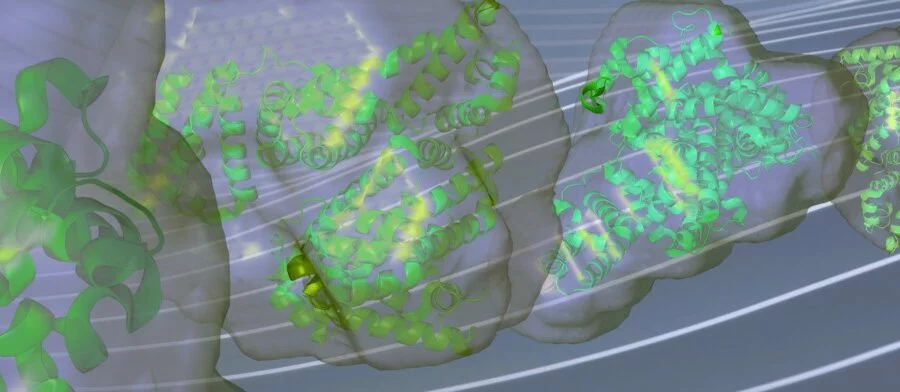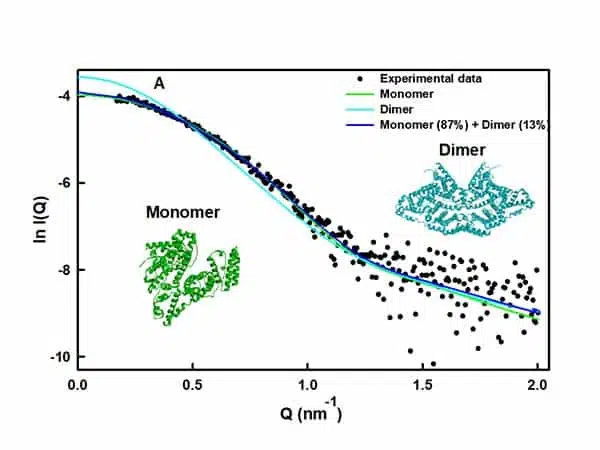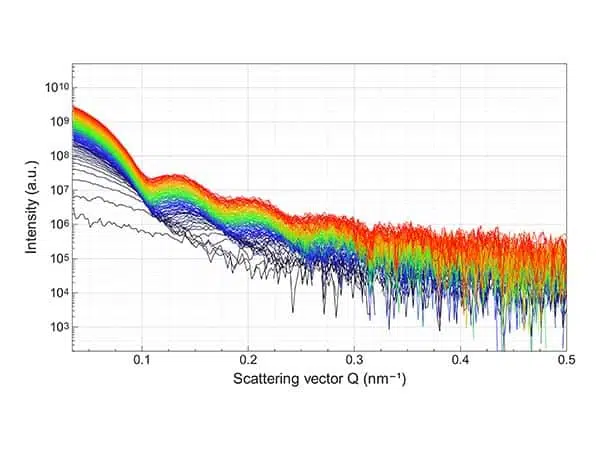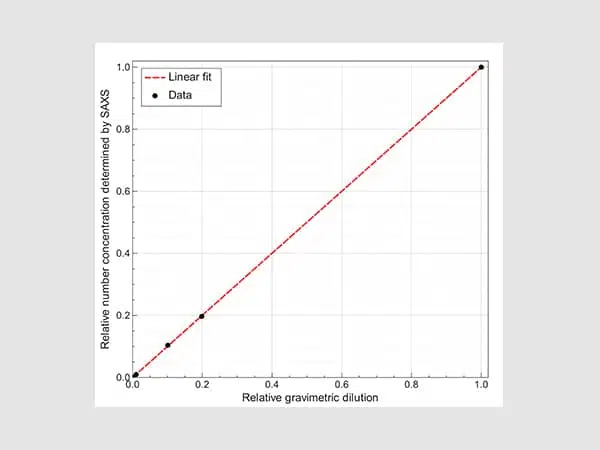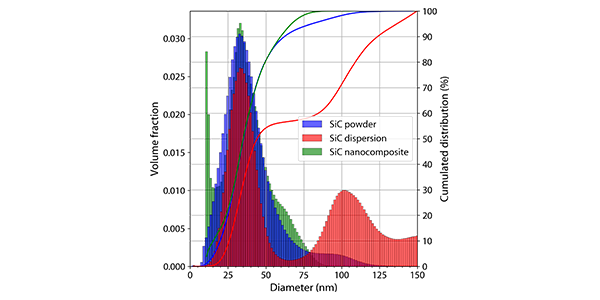Shearing of clay minerals in suspension
Investigation of smectite suspension shear behavior through SAXS measurements performed with the Xenocs Couette stage Clay minerals are a group of hydrous aluminosilicate minerals that are commonly found in soils, sediments, and rocks. The most common types include kaolinite, illite, and smectite, each with its own distinct characteristics and uses.…
Mass specific surface area determined by SAXS
In this Application Note, the XSACT software package is used to process the SAXS data and determine the specific surface area of SiO2 powder samples. Both the invariant and the absolute-scale methods are employed, and the results are compared with the obtained from BET measurements and analysis.
Characterization of protein intermolecular interactions
SAXS was used to study the effect of pH and protein concentration on the self-interaction process of a BSA system in solution Bovine serum albumin (BSA) is a non-glycosylated globular protein found in bovines. It is widely used in drug delivery, immunodiagnostic procedures and in clinical chemistry due to its…
Focused beam for residual stress and texture analysis
Residual stress analysis and texture measurements obtained on thin film samples with the interchangeable auxiliary source (AuX source) of the Xeuss 3.0.
Measurements and analysis of extremely thin single protein fibers
Silks are well known natural protein fibers, spun by spiders, silkworms and other insects, that have been used for centuries in the textile industry due to...
Characterization of protein self-association
Bovine serum albumin (BSA) is a non-glycosylated globular protein found in bovines. It is widely used in drug delivery, immunodiagnostic procedures and in clinical chemistry due to its low cost and...
Fast thermal studies of cocoa butter
Cocoa butter is a highly polymorphic compound exhibiting up to six crystalline forms of glycerides (fatty acids), each defined by different stability and melting point. In order to...
Batch data analysis of particle size temporal evolution studied with SAXS
Time-resolved Small Angle X-ray Scattering (SAXS) mesurements, performed during synthesis procedures or other chemical or physical reactions, have the potential to reveal valuable information which can...
Number concentrations for Gold Nanoparticles: robust and traceable measurements in the lab
SAXS laboratory instruments provide traceable number concentration measurements for nanoparticles. Nanoparticles (NPs) are an essential building block for ...
Size distribution of nanoparticles: powders, dispersions and composites
Size distributions of industrial nanoparticles have been determined in various forms for quality assessment and process monitoring. Nanoparticles are being produced at an increasing rate and have become an essential building block for the development of new materials with improved properties. The performance of the final products depends not only…


